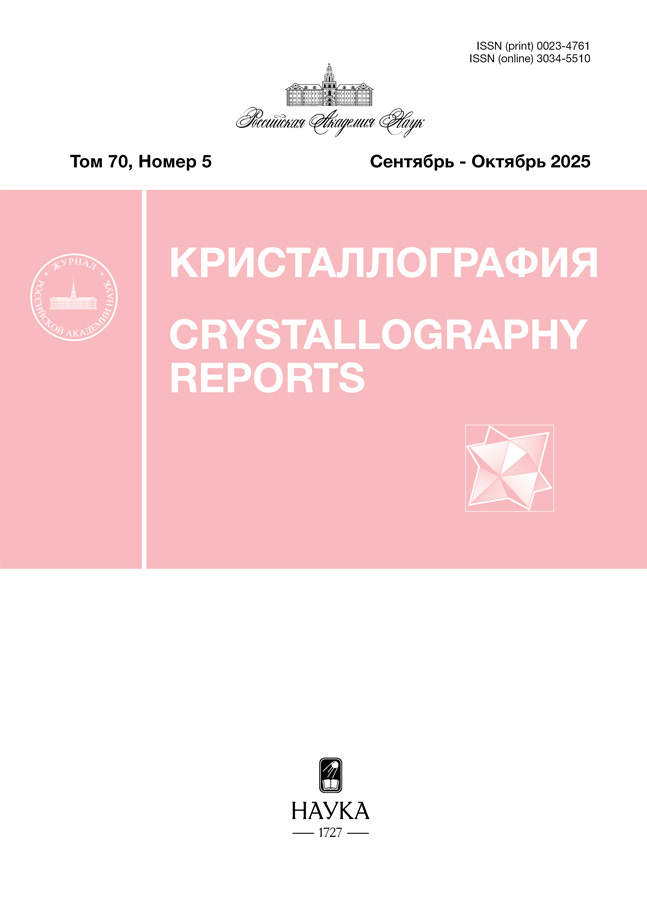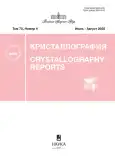Кристаллизация белков с использованием температурного градиента
- Авторы: Стрелов В.И.1, Сафронов В.В.1, Супельняк С.И.1
-
Учреждения:
- Национальный исследовательский центр “Курчатовский институт”
- Выпуск: Том 70, № 4 (2025)
- Страницы: 598–603
- Раздел: КРИСТАЛЛОГРАФИЯ В БИОЛОГИИ И МЕДИЦИНЕ
- URL: https://rjsvd.com/0023-4761/article/view/688083
- DOI: https://doi.org/10.31857/S0023476125040082
- EDN: https://elibrary.ru/JFXRXV
- ID: 688083
Цитировать
Полный текст
Аннотация
Представлены результаты многолетней разработки нового метода температурного управления процессами зародышеобразования и роста образовавшихся кристаллов. На его основе создана аппаратура, в которой реализована возможность раздельного управления в автоматическом режиме процессами роста кристаллов белков.
Полный текст
Об авторах
В. И. Стрелов
Национальный исследовательский центр “Курчатовский институт”
Автор, ответственный за переписку.
Email: strelovvi@mail.ru
Россия, Москва
В. В. Сафронов
Национальный исследовательский центр “Курчатовский институт”
Email: strelovvi@mail.ru
Россия, Москва
С. И. Супельняк
Национальный исследовательский центр “Курчатовский институт”
Email: strelovvi@mail.ru
Россия, Москва
Список литературы
- Giegé R. // FEBS J. 2013. V. 280. P. 6456. https://doi.org/10.1111/febs.12580
- Rosenberger F., Meehan E.J. // J. Cryst. Growth. 1988. V. 90. P. 74. https://doi.org/10.1016/0022-0248(88)90300-4
- Garcia-Ruiz J.M., Moreno A. // J. Cryst. Growth. 1997. V. 178. P. 393. https://doi.org/10.1016/S0022-0248(96)01188-8
- Rosenberger F., Howard S.B., Sowers J.W., Nyce T.A. // J. Cryst. Growth. 1993. V. 129. P. 1. https://doi.org/10.1016/0022-0248(93)90427-X
- Tabor H.G., Jasak H., Fureby C. // Comput. Phys. 1998. V. 12. P. 620.
- Safronov V.V., Krivonogova N.V., Bezbakh I.Zh., Strelov V.I. // J. Mol. Liquids. 2019. V. 284. P. 353. https://doi.org/10.1016/j.molliq.2019.04.013
- Otalora F., Garcia-Ruiz J.M. // J. Cryst. Growth. 1997. V. 182. P. 141. https://doi.org/10.1016/S0022-0248(97)00325-4
- Carotenuto L., Piccolo C., Castagnolo D. // Acta Cryst. D. 2002. V. 58. P. 1628. https://doi.org/10.1107/S09074449010116444
- Lin H., Rosenberger F., Alexander J.I.D. // J. Cryst. Growth. 1995. V. 151. P. 153. https://doi.org/10.1016/0022-0248(95)00016-X
- Vekilov P.G., Rosenberger F., Lin H. // J. Cryst. Growth. 1999. V. 196. P. 261. http://doi.org/ 10.1016/S0022-0248(98)00840-9
- Lee C.P., Chernov A.A. // J. Cryst. Growth. 2002. V. 240. P. 531. https://doi.org/10.1016/S0022-0248(02)00909-0
- Savino R., Monti R. // Int. J. Heat Mass Transfer. 1999. V. 42. P. 111. https://doi.org/10.1016/S0017-9310(98)00140-9
- Безбах И.Ж., Захаров Б.Г., Стрелов В.И. и др. // Тр. 6-й Междунар. конф. “Рост монокристаллов и тепломассоперенос” (ICSC-2005). Обнинск. 2005. Т. 3. С. 545.
- Bezbakh I.Zh., Ginkin V.P., Safronov V.V. et al. // J. Mol. Liquids. 2019. V. 283. P. 652. https://doi.org/10.1016/j.molliq.2019.03.042
- Стрелов В.И., Захаров Б.Г., Безбах И.Ж. и др. // Кристаллография. 2018. Т. 63. № 1. С. 163. https://doi.org/10.7868/S0023476118010198
- Куранова И.П. // Поверхность. Рентген., синхротр. и нейтр. исслед. 2004. № 6. С. 4.
- Стрелов В.И., Куранова И.П., Захаров Б.Г., Волошин А.Э. // Кристаллография. 2014. Т. 59. № 6. С. 863. https://doi.org/10.7868/S0023476114060289
Дополнительные файлы

















